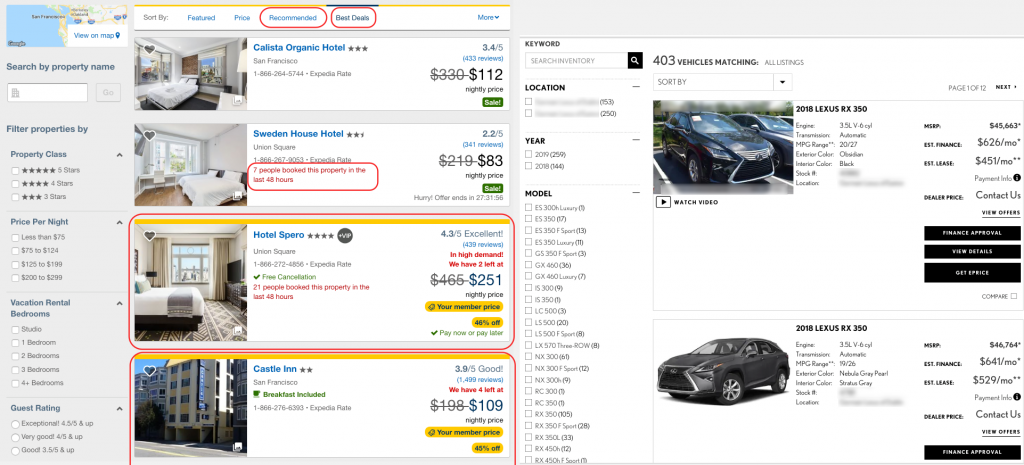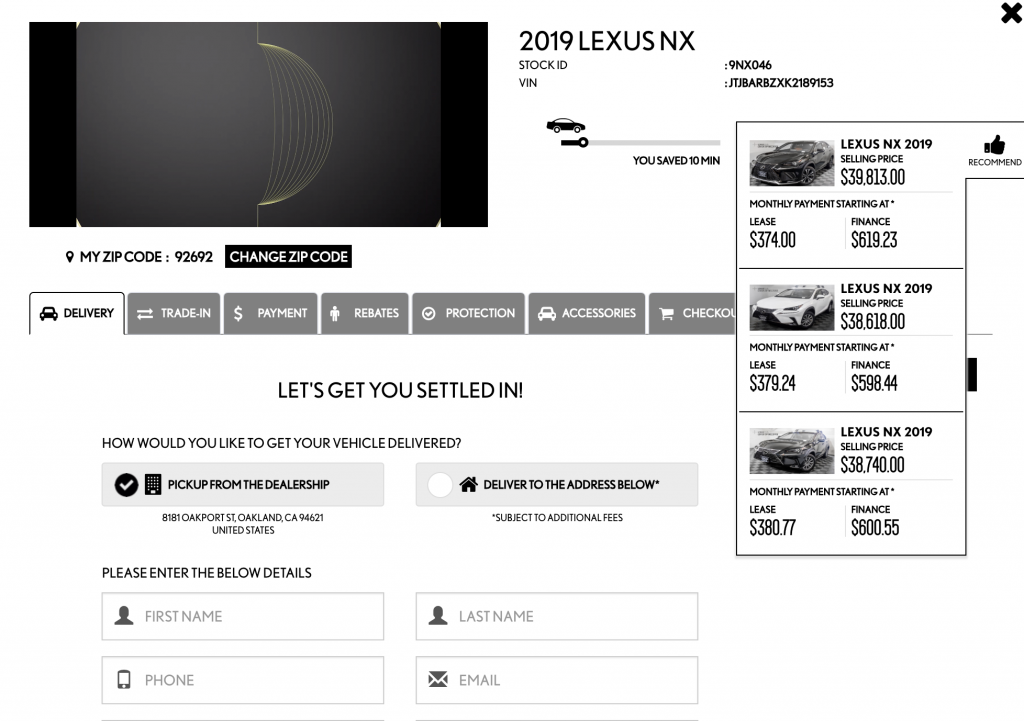The path to purchase is often filled with tidbits of interesting information which, if used correctly, can help the Digital Retailing platform(DR) tailor a personalized journey that can be unique for each dealership. The end goal of any Digital Retailing platform is to increase the conversion rates from the dealership website. If we follow the trail from the touch points to see what path a customer took to conversion it can provide some really interesting insights to the digital team.
- How did users actually decide to click on the “Digital Retailing ”option?
- Did they follow the path of display cues or click through directly from the VDP or VLP or did they just go straight from a Google Ad display ?
- Did they look at multiple available rebates and then narrow down their choice to a specific VIN before making the final choice?
To understand more on the breadcrumbs used across different industries, let us make a quick comparison between a popular travel portal and a typical dealer portal.

No prizes for guessing which one is better suited for enabling e-Commerce through effective use of visual bread crumbs.
Take a look at some of the key elements in the travel portal on the left and how they address some of the customer behavioral elements.
- Introducing scarcity and urgency to popular items.
eg : 21 people booked the property in last 24 hours.
- Recommending items with special payments and incentives.
eg : Your member price , 46% off
- Bubbling up product items that are not getting enough visits.
eg: Breakfast included, More Positive reviews
The travel portal on the left introduces these elements very subtly and catches the user’s attention and makes the customer follow a possible click stream path. We can just replace the properties in the listing with VINs from the inventory to get a rough idea of how the dealership website can be changed. When we think about enabling e-commerce/ digital retailing from the dealership website we cannot overlook the other critical features that need to come in as part of that.
Let us take a look at some of the technologies that are needed to power these features in Digital Retailing.
Recommendation Engines
During a store visit, a savvy salesperson can recognize a customer’s tastes and take on board their description of what they’re hoping to find, then lead them towards a selection of the vehicle that they might buy. This is one area where personal recommendations can have a significant impact on a customer’s choice. Let us take Amazon as an example, where we can see the power of product recommendations in full use. Amazon uses deep learning-generated recommendations at almost every step of the on-site journey — on category pages, product pages and even on the checkout page.
“On some pages, it’s estimated that over 70% of Amazon screen real estate is given over to recommendations. But it’s a tactic that pays off, as product recommendations drive 33% of the retailer’s revenue. And a third of Amazon’s revenue is a pretty big deal.”

Now comes the big question, What if Amazon start selling cars and start eating my lunch? Till the time it is a What-if question, we have tools to provide our dealership customers with an Amazon like experience through our Digital Retailing Platform.
Digital retailing allows the dealership to promote right add-ons at just the right time when you know a potential customer is already showing strong buyer intent. We can focus recommendations on just the right places where they will have the biggest impact, whether that be in a follow-up email to re-engage a previous visitor, or on the checkout page when the customer already has made their choice and ready to proceed.

There are many different ways of creating recommendation engines and one of our initial approach was to use a technique called collaborative filtering. Even though it can provide a quick and easy approach, vin based collaborative filtering suffers from the following:
- popularity bias: recommender is prone to recommend only popular VINs with more VDP views/clicks.
- item cold-start problem: recommender fails to recommend new or less-known VINs because they have either no or very little interactions from customers.
Only a very small fraction of VDPs have lots of user interactions while a “long-tail” of vehicles don’t have. Some of the popular VINs may belong to the competitive category with lower profit margin for the dealership. On the other hand, the lower frequency VDPs may have vehicles that can provide a larger profit margins. We have since moved away from collaborative filtering to a convolutional neural network approach ( will be covered in another blog)
Clustering Engine
“Clustering or segmentation is a way of grouping data, such that all the data elements within a group are maximally similar to each other and minimally similar to data elements in other clusters, based on some measure of similarity. It’s an unsupervised machine learning technique.”
We capture datasets that may be represented as a collection of clickstream pathways.
“Clickstreams can be used to allow the user to see where they have been and allow them to easily return to a page they have already visited, a function that is already incorporated in most browsers. Clickstream can display the specific time and position that individuals browsed and closed the website, all the web pages they viewed, the duration they spent on each page and it can also show which pages are viewed most frequently. There is abundant information to be analyzed, individuals can check visitors clickstream in association with other statistical information, such as: visiting length, retrieval words, ISP, countries, explorers, etc.”
To make sure the DR platform can provide the maximum customer engagement to the dealership, it has to collect data, analyze insights and predict customer behavior in intelligent ways. When the digital retailing platform is used smartly it can empower the dealership marketing team to leverage data science and AI technology to provide a better, more curated experience to their customers and thereby improve the website traffic conversion.
Prediction Engine
“Up selling is encouraging the purchase of anything that would make the primary purchase more expensive. Cross-selling is encouraging the purchase of anything in conjunction with the primary product.” For example, it would be up selling to offer the purchase of accessories with a vehicle, but it would be cross-selling to offer the purchase of a F&I products with a vehicle.
We have a binary transactional database that captures all the e-commerce transactions that happen through our platform. We use an algorithm called Apriori to mine through it and find association rules.
Apriori is an algorithm for association rule learning and frequent item set mining over transactional databases. It identifies the common individual products in the database and predicts where else they could appear. In simple words, Apriori answers the question for us : “Given the past transaction data, Who else could buy Gap Insurance or Tire&Wheel Protection?”.
By focusing on the web site shopper connected journey and building a true picture of the buyers across different vehicles in the inventory, dealership can identify the business opportunities that are best chances of conversion in digital retailing. The three key personalization features we discussed above are implemented in our platform and is entirely driven by deep neural networks.
In the next set of blogs we will share some of our learnings from implementing these using machine learning .